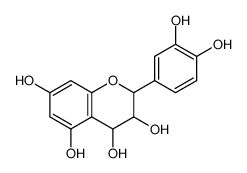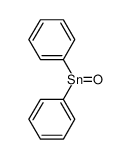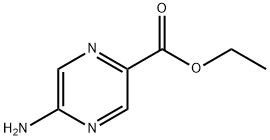Hello, I want to ask about proper methods for disposing of plastic hangers. Are they recyclable? What health risks come from improper disposal? Are there safer alternatives or ways to repurpose them?
How can improving public awareness and recycling infrastructure reduce the health risks associated with plastic waste like hangers?
Related Encyclopedia

- 26914-52-3
- C9H15NO2S
- 201.29
- All (0)
- China (0)
- (0)

- 51252-84-7
- C3H4O2
- 72.06270
- All (0)
- China (0)
- (0)

- 25191-16-6
- C6H12O6
- 180.15600
- All (0)
- China (0)
- (0)

- 27015-21-0
- C15H14O7
- 306.26700
- All (0)
- China (0)
- (0)

- 49603-39-6
- C14H18
- 186.29300
- All (0)
- China (0)
- (0)

- 29159-23-7
- C7H7NO
- 121.13658
- All (0)
- China (0)
- (0)

- 31671-16-6
- C12H10OSn
- 288.92000
- All (0)
- China (0)
- (0)

- 12260-12-7
- F3H2-
- 59.01110
- All (0)
- China (0)
- (0)

- 145954-03-6
- C78
- 936.83500
- All (0)
- China (0)
- (0)
- 72380-68-8
- C12H10FeSi
- 238.13800
- All (0)
- China (0)
- (0)
Related Products More >
-
- 9003-55-8
- CNY Request For Quotation
-
- 7446-19-7
- USD 10.0000
- 25kg
-
- 75-13-8
- CNY 180000.0000
- 1ton
-
- 63449-39-8
- USD 1000.0000
- 1200kg


 沪ICP备2021018848号-5
沪ICP备2021018848号-5


From a health perspective, plastic hangers are typically made from polymers such as polypropylene or polystyrene, which contain additives like plasticizers and stabilizers. When improperly discarded in landfills or incinerated, these substances can break down and release harmful chemicals, including volatile organic compounds (VOCs) and endocrine disruptors, that may contaminate soil, water, and air, indirectly affecting human health by entering food chains or inhalation pathways.
For patients concerned about health risks, it is important to understand that while direct exposure to plastic hangers in daily use is generally low risk, improper disposal contributes to broader environmental contamination, which can have cumulative effects on communities. Therefore, managing plastic waste responsibly is a public health issue.
Recommended practices for disposing of plastic hangers include checking with local recycling centers to see if they accept hard plastics, repurposing hangers for household uses, donating to thrift stores or dry cleaners that might reuse them, or using specialized recycling programs dedicated to hard plastics. Avoid burning plastic hangers, as combustion releases toxic fumes harmful to respiratory health.
Alternatives include choosing hangers made from biodegradable materials or metal, which have lower environmental and health impacts when discarded.
From a chemical perspective, the disposal of plastic hangers is challenging because their covalent polymer chains are very stable and do not easily degrade under normal environmental conditions. The polymer chains are held together by strong covalent bonds, and the material is mostly nonpolar, which means microorganisms that break down organic matter have a hard time interacting with and decomposing these plastics. This leads to persistence in the environment if not properly managed.
In industrial or recycling applications, plastic hangers are sometimes melted down and reprocessed. However, due to their specific polymer types and additives like plasticizers and stabilizers (which improve flexibility and durability), recycling can be complicated. If disposed of improperly, plastic hangers often end up in landfills or the natural environment, where their stability causes them to persist for decades or longer.
From a biological viewpoint, the accumulation of plastic waste affects ecosystems and can introduce microplastics into food chains, potentially causing harm to wildlife and even humans indirectly. Understanding the polymer's chemical stability and low reactivity helps explain why conventional biological degradation is ineffective and why alternative disposal methods such as mechanical recycling or chemical recycling are being researched.
When disposing of plastic hangers, it is important to check local recycling programs, which may accept certain types of plastics, or consider repurposing hangers for other uses to extend their lifecycle. Biodegradable alternatives are being developed, using polymers with more polar functional groups that microorganisms can break down more readily.
Think of it like this: You know how your grandma’s “junk drawer” has random buttons or rubber bands that might be useful someday? Plastic hangers are the closet version of that—except they’re bulkier and harder to ignore. My neighbor once saved 50 hangers over years, thinking she’d “find a use” for them. Spoiler: She didn’t. Instead, she donated them to a thrift store that uses them for displaying clothes, saving them from the dump!
Here’s the science: Most plastic hangers are made from polystyrene (PS) or polypropylene (PP)—both recyclable in theory, but their shape (thin arms + hooks) makes them a nightmare for recycling facilities. Curbside programs often reject them because they jam sorting machines, and mixed-material hangers (with metal hooks or rubber grips) contaminate the recycling stream. Even if recycled, the plastic quality degrades, so facilities prioritize bottles or containers instead.
So, what can you do?
Reuse creatively: Hangers aren’t just for clothes! Use them to organize scarves, belts, or craft supplies. Or repurpose them as DIY tools—like a paint stirrer, plant trellis, or even a lock picker (for those “oops, I locked myself out” moments).
Donate to stores: Thrift shops, dry cleaners, or consignment stores often reuse hangers for free. Call ahead to confirm—some even offer discounts if you bring a bunch!
Find a rigid plastic recycler: Search online for “plastic hanger recycling near me” or check with local recycling centers. Some accept hangers, toys, or laundry baskets. If there’s none nearby, look for mail-back programs (some brands like H&M or IKEA offer free recycling for their hangers).
Avoid the problem entirely: Next time you shop, opt for wooden or metal hangers—they’re sturdier and easier to recycle (wood can be composted, and metal is infinitely recyclable).
Pro tip: If you must toss plastic hangers, don’t put them in your curbside bin! Instead, drop them at a landfill’s “bulk waste” section or a recycling event that accepts mixed plastics. Better yet, host a hanger swap with friends—trade your old ones for “new” colors or styles!
Bottom line: Plastic hangers are the closet’s awkward guest—they’re not trash, but they’re not welcome everywhere. Reuse, donate, or find a specialty recycler to keep them out of landfills. Your closet (and the planet) will thank you! ?✨
People often mess up by assuming all plastic hangers go in the recycling bin. They dump armloads in, but if your local program doesn’t take #5 or #6 plastics, those hangers just contaminate the batch and end up in landfills anyway. Others think breaking them into pieces helps, but that makes sorting harder and can damage recycling machines. And some folks throw perfectly good hangers away without considering reuse—even slightly bent ones can often be fixed or repurposed.
For home disposal, start with reuse. If they’re still in good shape, donate them to thrift stores, dry cleaners, or friends—places that always need extra hangers. For broken ones, get creative: the hooks make great organizers for belts, scarves, or even pots in the garden. The plastic arms can be cut up to hold plastic bags or as plant markers.
If reusing isn’t an option, check local recycling rules. Some cities accept #5 plastics in curbside bins, but only if they’re clean and free of metal. If yours doesn’t, look for drop-off spots—many big-box stores (like clothing retailers) have bins specifically for hanger recycling. Dry cleaners often take back their own hangers to reuse or recycle in bulk, so that’s another easy drop-off.
If all else fails, toss them in the trash—but first, remove any metal parts if possible (snip off hooks with scissors) to keep plastic and metal separate. And to cut down on waste, opt for wooden or metal hangers when buying new—they last longer, are easier to recycle, and reduce the need for disposal in the first place.
Small steps, like donating or repurposing, keep plastic out of landfills. It’s not always convenient, but a little effort goes a long way in keeping things out of the trash.